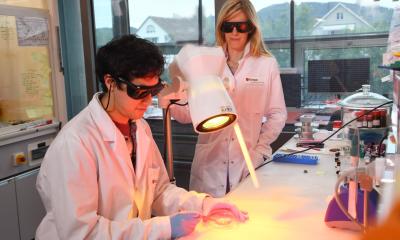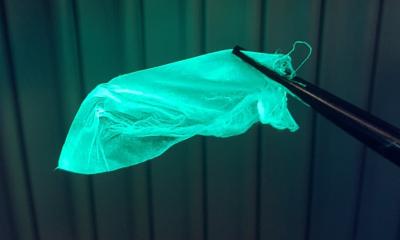Image source: Adobe Stock/peterschreiber.media
News • Contraception, wound healing, arthritis treatment
Three promising medical applications of nanoparticles
Nanoparticles have become an essential part of medicine, from aiding in diagnostic tests to serving as immunotherapy agents and more. Thanks to their ultrasmall size — around the thickness of a strand of DNA — these particles are adept at getting inside tissues and targeting precise areas.
Here are three recent papers published in ACS journals that could expand the beneficial uses for nanoparticles, based on results in rats. The technology could be used to improve contraceptive methods, burn creams and arthritis treatments.
1. Nanoparticles for female contraception
Contraceptive measures are widely used in family planning, but some methods can cause unwanted side effects for the user. These researchers aimed to create a safer emergency contraceptive by targeting early embryonic trophoblast cells rather than the ovaries or uterus. They loaded copper oxide nanoparticles into a hydrogel delivery system, which they then injected into rats’ uteruses. There, the particles prevented embryonic implantation, and therefore prevented pregnancy, without major side effects. This strategy could be viable for up to eight days after an egg’s fertilization, while other emergency contraceptives must be taken within two days to be effective.
2. Nanoparticles for burn wound healing

Image source: Adobe Stock/Pixelmixel
These researchers created a better burn cream using zinc oxide nanoparticles and Calendula officinalis (marigold) extract. While both ingredients have demonstrated antimicrobial and anti-inflammatory properties, neither substance can easily enter the body, even at the site of a wound. By loading zinc oxide nanoparticles with marigold extract, the team created a cream that healed rats’ skin burns and prevented tissue infections. In tests on cells taken from the damaged tissues, the researchers found that the nanoparticle-containing cream increased the proliferation of fibroblast cells, which help repair skin.
3. Nanoparticles for suppressing arthritis flares
Even in patients who respond well to treatment for rheumatoid arthritis, flare-ups can happen. These episodes cause pain and discomfort in addition to further joint damage. Here, researchers aimed to suppress arthritic flare-ups using specialized nanoparticles bound to peptide antigens loaded with calcitriol, a form of vitamin D3. When injected intramuscularly into two different rat models with rheumatoid arthritis, the nanoparticles accumulated in lymph nodes adjacent to joints, where they worked to prevent bone erosion and preserve cartilage.
The paper "Immunomodulatory Nanoparticles for Modulating Arthritis Flares" was published in ACS nano.
Source: American Chemical Society
07.01.2024










